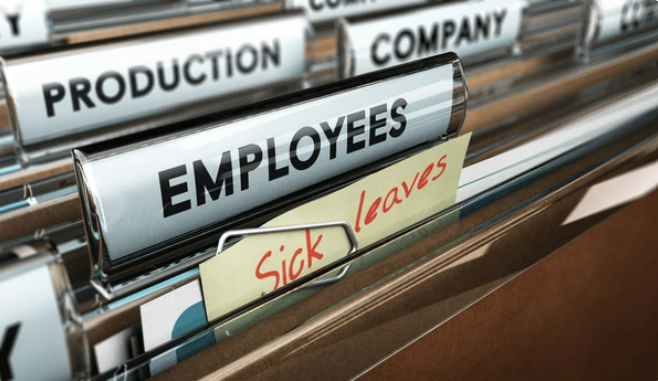✨ Health insurance, now in PayFit - learn more
💷 All the rates & thresholds you need to know for 25/26...right here
✨ The Payroll Journey: Start, Scale & Succeed Globally - learn more
✨ Health insurance, now in PayFit - learn more
💷 All the rates & thresholds you need to know for 25/26...right here
✨ The Payroll Journey: Start, Scale & Succeed Globally - learn more

In the UK, maternity leave is a statutory right all female employees expecting or having a child are entitled to.
It’s an exciting but also busy time - for the employee…but also your people team! From sorting out maternity pay to marking KIT days in the calendar, there’s quite a bit to do. Not to mention keeping up with all the laws in place that protect expectant mothers.
While it’s hard to cover every little detail, we’ve done our best to put together a definitive guide to maternity leave, from what the law says to FAQs and best practices.
Let’s start with the basics…
Statutory Maternity Leave is the right for a female worker or employee to take time off when they're having a baby. This makes them eligible for both Statutory Maternity Leave and Statutory Maternity Pay.
Under UK law, an employee is entitled to up to 52 weeks of Statutory Maternity Leave from the very first day on the job. Legally, the first two weeks of this block of leave are mandatory - known as Compulsory Maternity Leave. This goes up to four weeks for factory workers. You cannot, under any circumstances, allow the employee to work during this time.
Of the 52 weeks, 26 weeks count as Ordinary Maternity Leave (OML), while the remaining 26 are known as Additional Maternity Leave (AML). This doesn’t mean the employee gets different rates of pay; rather, they are afforded different kinds of rights depending on the stage of maternity leave they’re on (see below).
It’s worth noting that while an employee is pregnant, they should also receive ‘reasonable’ paid time off during their working hours to attend antenatal appointments (plus travel time) or if they’re experiencing any kind of illness due to their pregnancy.
The two weeks after birth that employees must legally take off.
During the first block of 26 weeks, the employee has a right to return to the same job. In other words, you must, at the very least, maintain the same pay or conditions for them, if not make these better.
For employees taking some or all of the additional 26 weeks, this is known as additional Maternity Leave.
Now, you’re allowed to offer them a slightly different role if they return, but this job must be similar to their previous role with the same terms. If the original role is still alive and would still exist even if the employee hadn’t gone on leave, then you must offer this. In addition, if the new role isn’t something the returning employee can do or has worse conditions and pay than the old one, then you must stick to the original contract.
Employees should give your company at least 15 weeks' notice. As part of this, they should let you know when the baby is due and when they’d like to start taking their leave. While this doesn’t have to be in writing, it’s a good idea to have this documented so everyone is clear and aligned from day dot.
As for when they can take pregnancy leave, employees can start their leave as early as 11 weeks before the expected week of childbirth (EWC). The latest they can start? One day after the baby is born.
Finally, if employees want to change their return-to-work date, they can do so but should give you 28 days' notice if possible.
Only staff who are legally classed as employees are eligible to go on maternity leave. In other words, if someone is a contractor or classed as a ‘worker’, then they would not be entitled to any Maternity Leave or Pay from your business.
To brush up on the different employment classes and their rights, see our blog on employment status.
In addition to this, it doesn’t matter how long an employee has been with you or how many hours they’ve worked, nor what they’re paid. UK pregnancy leave is a day one right.
While the law is still evolving to adapt to the needs of our modern-day workforce, some transgender men could also be entitled to maternity leave if they’re able to bear a child. The act of giving birth to a child is what underpins the entitlement to leave and also, in some cases, pay too.
The answer is yes. If a surrogate is legally classified as an employee, then they’re entitled to maternity leave and pay just as other pregnant women are. This applies regardless of whether or not they’re biologically related to the child or their relationship to the child after birth.
Maternity leave is just one form of parental leave. There’s also adoption leave, paternity leave for fathers, and Shared Paternity Leave (SPL), which both parents can use. If a mother wants to take both Maternity or Adoption Leave and Shared Parental Leave, they can. All they need to do is ‘curtail’ (or cut short) their pregnancy or adoption entitlement before using up the full 52 weeks.
You can find out more about curtailing in our guide to shared parental leave in the UK.
Shared Parental Leave Guide
Now let’s move on to a slightly different yet very much related subject - maternity pay.
The terms of Statutory Maternity Pay (SMP) and Statutory Maternity Leave (SML) are often confused with one another or even used interchangeably.
One, of course, is related to the leave taken, while the other is how much an employee gets paid on that leave. But perhaps the most significant difference between the two is SML is compulsory, while getting SMP will depend on a couple of things.
Put simply, if an employee becomes pregnant after they start working for you, then they should qualify for SMP.
In order words, they’ll need to:
Earn an average of at least £123 a week (otherwise known as the Lower Earnings Limit LEL)
Have worked for your business continuously for at least 26 weeks before the ‘qualifying week’, in other words, the 15th week before the mother is expected to give birth
In total, an employee is entitled to 39 weeks' pay, with the first six weeks paid at 90% of the employee’s average weekly earnings (AWE). The following 33 weeks are then paid at the statutory weekly rate (£184.03) or 90% of the employee’s AWE, whichever is lower.
While these are the legal requirements regarding maternity pay, a significant number of companies continue paying their employees more than these amounts throughout their maternity leave. This is referred to as Occupational Maternity Pay (OMP) and is down to the discretion of individual companies.
Remember that as a business, you’re likely to be able to recover 92% of any SMP paid on your payroll. And if you qualify for Small Employer’s Relief, that goes up to 103%.

Once a staff member is on maternity leave, it can be hard to know how often you should reach out to them. Of course, you might not want to disturb them as they enjoy quality time with their new bundle of joy. But keeping in touch at the right intervals and in a thoughtful way can help these employees feel a bit more included and ‘in the loop’ with any work developments.
So before they leave, it’s a good idea to discuss with the expectant how much contact they’d prefer to have. Don’t forget to discuss how they’d like to be contacted. Keeping in Touch (KIT) or SPLIT days are one way of doing this, plus can be great for helping new mothers ramp up again when they decide to return to work. Employees can work up to 10 of these days at any point during their leave apart from during their two weeks of compulsory Maternity Leave.
While on maternity leave, employees still retain all their normal work benefits (apart from their normal wages, of course). Given this, you should still allow them their full holiday entitlement, though they must take this either before or after their pregnancy leave. This is because you can’t take two types of statutory leave at the same time.
So, while on maternity leave, employees can’t take annual leave, but they can still accrue their holiday entitlement. This also includes bank holidays, if you give those off too.
If an expectant employee is awarded a salary increase between the relevant period and the end of their maternity pay, their average weekly earnings will need to be recalculated based on the higher salary. As a result, their maternity pay will need to be increased.
Let’s say an employee is not entitled to maternity pay, and as an employer, you turn down their request for this. That staff member may still be able to access Maternity Allowance (MA). If this is the case, you’ll want to return a MAT B1 form to that employee, along with a signed SMP1 form, within seven days of their decision. An employee must receive this form within 28 days of their request for SMP or the birth of the child, depending on whichever occurs earlier. The employee can then take this to their local Jobcentre Plus and try to claim their MA.
Sometimes, restructuring is inevitable. And while it’s never an ideal scenario to have this happen while employees are preparing for or taking their maternity leave, it's something your HR team may be faced with.
So, what does the law say about this? Well, if an employee is made redundant after the 15th week marker, they are still entitled to SMP for 39 weeks, either as a lump sum or monthly. If they’re made redundant before this time, they might still be able to claim Maternity Allowance (MA).
Remember that if that employee has worked for your company for two years more and is over 17 years of age, they’ll be entitled to statutory redundancy pay (and you can always offer additional contractual pay on top of this).
It’s also worth noting that Regulation 10 of the Maternity and Parental Leave Regulations 1999 stipulates that if there’s a suitable alternative position at your organisation, you should offer this.
While a difficult subject to talk about, sometimes there can be complications. In the event of a stillbirth after 24 weeks of pregnancy, the employee must still receive their full maternity pay and leave. If the baby passes away after this period of time, this is treated as a miscarriage. In this case, the employee, unfortunately, won’t be entitled to SML or SMP. In this case, you can offer them time off as compassionate or sick leave and pay.
In either of these instances, it’s paramount for employers to act in a compassionate and supportive manner and to put the wellbeing of their employees first.
Looking for a better way to manage maternity leave for your people and business? PayFit might be it!
Our platform automatically calculates maternity pay for you. Simply enter the date that the employee will begin their leave, and our software will then automatically calculate the statutory amount that they should be paid and the amount your company can reclaim to cover the costs.
With PayFit, you can also set up OMP, as well as your company’s own maternity leave policy if you plan to provide more support above the statutory requirements.
For example, should you wish to pay all employees 100% of their salary for the first 10 weeks of maternity leave and then subsequently pay 50% for the remainder of their leave, then you are able to do so through the app. Once all this has been set up, PayFit will automatically calculate the correct amount each time one of your employees goes on maternity leave.
Staff can also enter their own Maternity Leave request through their personal portal, making leave & absence management easier for HR teams.
Interested in finding out more about how PayFit can help automate your payroll and HR processes? Why not book a demo with one of our friendly product specialists?


What are KIT and SPLIT days? Get clear guidance on employer responsibilities, employee rights, payment calculations, and managing a smooth return to work.

Occupational leave is a complicated subject in the UK. Get answers to your statutory sick pay (SSP) and occupational sick pay (OSP) questions here.

Calculate part-time holiday entitlement in 2025-2026. Learn about calculation methods, workers' rights, and recent legislative changes for UK employers.

Understand Statutory Sick Pay (SSP) with our complete guide for UK HR & Finance leaders, covering eligibility, rates, waiting days, forms & payroll processing.

Understand UK Statutory Maternity Pay with our comprehensive guide to help growing businesses navigate SMP eligibility, rates, calculations, & HMRC claims.

Guide for HR & finance leaders of growing UK businesses on managing annual leave in 2026. Covers statutory entitlement, new holiday pay rules...